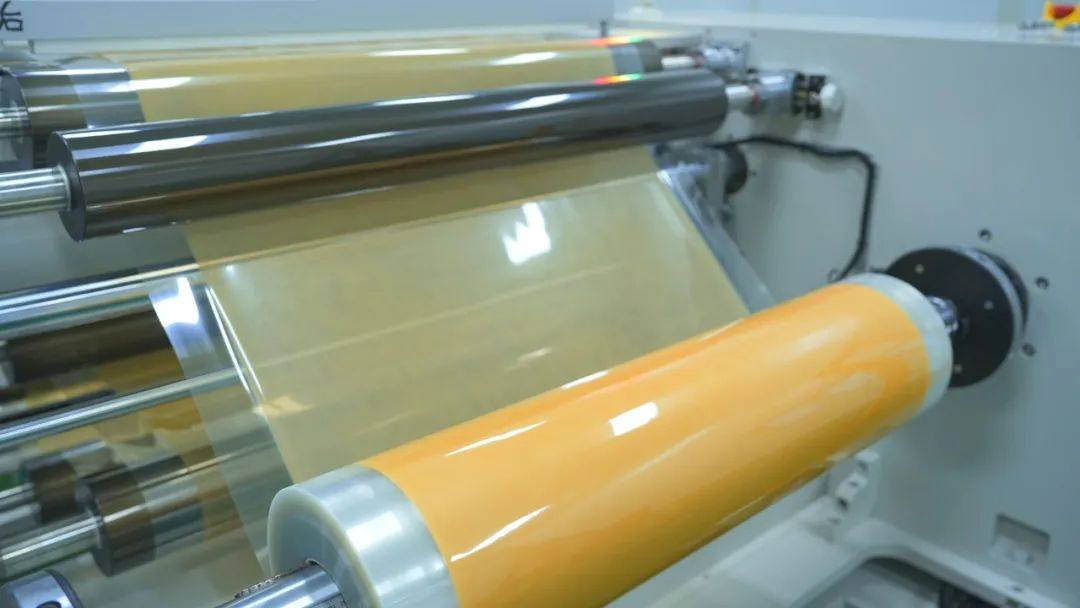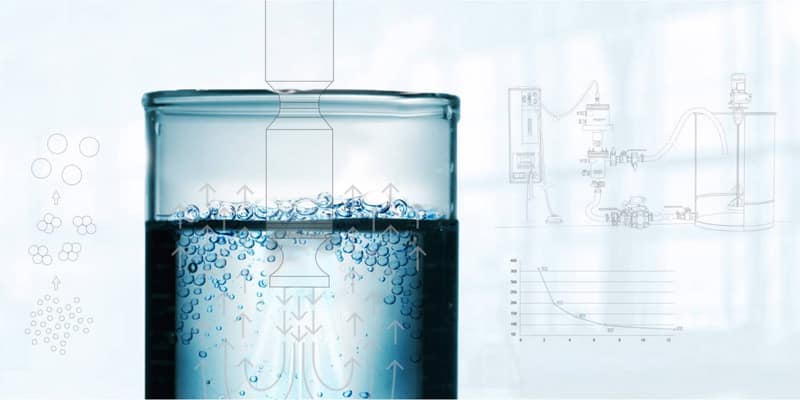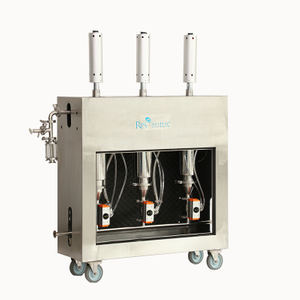What Is Ultrasonic Battery Slurry Degassing Technology?
Ultrasonic battery slurry degassing technology is an advanced process that utilizes ultrasonic energy to efficiently remove air bubbles from electrode slurries.
Below is a detailed analysis of this technology:
I. Background and Problems: Why is slurry degassing crucial?
In the manufacturing process of lithium-ion batteries, the preparation of electrode slurry is the first step and a key factor determining battery performance. The slurry is mainly composed of active materials, conductive agents, binders, and solvents (usually NMP or water).
Harmful effects of air bubbles:
· Coating defects: After coating and drying, air bubbles in the slurry can form pinholes, depressions, or protrusions on the electrode, disrupting the uniformity of the coating.
· Increased internal resistance: Air bubbles occupy spaces lacking active material, leading to poor local conductivity and increasing the battery's internal resistance.
· Cycle life degradation: Uneven coating results in uneven current distribution during charging and discharging, accelerating electrode material aging and shortening battery life.
· Safety risks: Severe defects can become triggers for battery thermal runaway.
Therefore, air bubbles in the slurry must be removed as thoroughly as possible before coating.
II. Traditional Degassing Methods and Their Limitations
Vacuum Agitation Degassing:
Principle: While agitating the slurry, a vacuum is drawn into the entire agitator, reducing the ambient air pressure and causing bubbles to expand and burst.
Limitations:
·Low efficiency: For high-viscosity, thixotropic slurries, internal bubbles migrate very slowly to the surface, requiring a long vacuum holding time.
·Limited effectiveness: For micron- and submicron-sized bubbles "captured" by the slurry network structure, vacuum alone is insufficient for effective removal.
·Large equipment: Requires a sealed agitator capable of withstanding high vacuum, resulting in high cost.
Centrifugal Degassing:
Principle: Utilizes centrifugal force to "throw" lighter bubbles to the slurry surface.
Limitations:
·May disrupt the slurry's dispersion, leading to particle sedimentation or agglomeration.
·Similarly ineffective at removing tiny bubbles.
·Complex equipment, high energy consumption, batch processing required.
III. Ultrasonic Degassing Technology Principle
Ultrasonic degassing essentially utilizes the "acoustic cavitation" effect.
Process Breakdown:
· Ultrasonic Transmission: An ultrasonic generator produces a high-frequency (typically 20kHz ~ 40kHz) electrical signal, which is converted into mechanical vibration by a transducer. This ultrasonic energy is then transmitted into the slurry via an amplitude transformer and a transmitting surface.
· Negative Pressure Zone Formation: Ultrasonic waves are a type of wave with varying density. In the rarefaction phase (negative pressure zone), the liquid is stretched, and the internal local pressure decreases.
· Cavitation Nucleus Growth: Pre-existing microbubbles (cavitation nuclei) in the slurry rapidly expand and grow under negative pressure.
· Positive Pressure Zone Collapse: In the subsequent dense phase (positive pressure zone), these grown bubbles are instantaneously compressed, collapsing and rupturing at extremely high speeds.
· Microjets and Shock Waves: The instantaneous bursting of bubbles generates extremely intense microjets and localized high-temperature, high-pressure shock waves. This intense physical action can:
o Break up large bubbles: Break larger bubbles into smaller ones.
o Promote merging: Cause tiny, dispersed bubbles to collide and merge under disturbance, forming larger bubbles.
Accelerated Floating: Larger bubbles, due to increased buoyancy, rapidly rise to the slurry surface and escape.
Simply put, ultrasonic degassing is a "break-and-build" process: it "activates" difficult-to-remove microbubbles through cavitation, causing them to either merge, grow larger, and rise rapidly, or be directly broken up and expelled from the inside.
IV. Technical Advantages
Compared to traditional vacuum and centrifugation methods, ultrasonic degassing has significant advantages:
· Extremely High Efficiency: Processing time is reduced from hours to minutes or even tens of seconds.
· Excellent Results: It has a strong ability to remove micron- and submicron-sized bubbles, increasing slurry density by 1% to 5%, achieving a near-theoretical air-free state.
· Continuous Online Production: It can be designed as an online flow channel system, where slurry degassing is continuously completed during pipeline transport, perfectly meeting the needs of large-scale continuous production. This is a revolutionary advancement.
· Maintaining Slurry Stability: Moderate ultrasonic energy does not damage the dispersion stability of the slurry and may even help deagglomerate slight agglomerates.
• Small footprint and easy integration: The compact structure of the online equipment allows for easy integration into existing production lines.
V. Application Forms and Equipment
Batch Processing Ultrasonic Degassing Machine:
• Similar to a high-powered laboratory ultrasonic cleaner, containers containing slurry are placed in a tank for processing.
• Primarily used for R&D, small-batch production, or remedial treatment of existing slurries.
Online Continuous Ultrasonic Degassing System:
Core Components:
Ultrasonic generator, transducer, flow channel with ultrasonic emitting surface.
Workflow: The slurry is pumped through one or more ultrasonically treated chambers or pipe sections, undergoing degassing during flow, and then directly enters the coating machine's feeding system.
This is currently the preferred solution for mainstream battery manufacturers upgrading their production lines.
VI. Challenges and Considerations
• Energy Control: Excessive ultrasonic energy can cause slurry overheating (cavitation generates significant heat), potentially leading to solvent evaporation or changes in binder properties. Therefore, a precise temperature control system (such as a cooling jacket) is required.
• Process Optimization: Parameters such as ultrasonic power, frequency, processing time (or flow rate), and slurry viscosity need to be precisely optimized to find a balance between achieving optimal degassing and avoiding negative impacts.
• Equipment Wear: Cavitation effects can cause cavitation wear on the ultrasonic transmitting surface, requiring the use of wear-resistant materials (such as titanium alloys) and regular maintenance.
Summary: Ultrasonic battery slurry degassing technology is a disruptive process innovation that solves the pain points of traditional degassing methods, such as low efficiency, poor effect, and difficulty in continuous operation. By utilizing the powerful physical principle of acoustic cavitation, it can efficiently and deeply remove air bubbles from the slurry, thereby significantly improving the quality and consistency of the electrode coating, ultimately laying a solid foundation for manufacturing next-generation lithium-ion batteries with high energy density, long cycle life, and high safety. As the battery industry's requirements for quality and efficiency continue to increase, this technology is rapidly becoming a standard feature of high-end battery production lines.



 English
English















